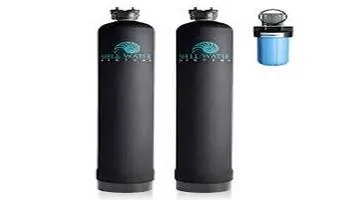Hemp Clothing: The Eco-Friendly Alternative Taking the Fashion World by Storm
Hemp clothing is a sustainable and eco-friendly fashion choice gaining popularity due to its numerous environmental and practical benefits. Made from the fibers of the industrial hemp plant, these garments are known for their durability, breathability, and softness, offering comfort and longevity. Hemp requires minimal water, no pesticides, and enriches the soil, making it a highly sustainable crop compared to conventional cotton. The fabric naturally resists mold and ultraviolet light, making it ideal for a range of climates. Hemp clothing also improves with age, becoming softer with each wash, and it is biodegradable, reducing landfill waste. With its blend of sustainability, functionality, and style, hemp clothing is an excellent choice for environmentally conscious consumers seeking quality and comfort.

In the ever-evolving landscape of sustainable fashion, hemp clothing has emerged as a frontrunner, earning accolades for its environmental benefits, durability, and comfort. As the fashion industry grapples with its significant carbon footprint, hemp offers a promising alternative to conventional textiles, one that is both eco-friendly and stylish. This review delves into the myriad advantages of hemp clothing, examining its sustainability, performance, and aesthetic appeal.
Sustainability: A Green Revolution
One of the most compelling reasons to consider hemp clothing is its impressive environmental credentials. Hemp is a hardy plant that requires minimal water and no synthetic fertilizers or pesticides to thrive, making it a sustainable crop from the outset. Unlike cotton, which is notoriously water-intensive and chemically dependent, hemp grows rapidly and regenerates soil health, contributing to a more sustainable agricultural system.
Moreover, hemp's carbon sequestration capabilities are noteworthy. The plant absorbs more CO2 per hectare than trees, effectively acting as a natural carbon sink. This attribute, combined with its ability to produce high yields in a short time, positions hemp as a highly efficient crop in the battle against climate change.
The processing of hemp fibers is also less harmful to the environment compared to other textiles. The retting process, which separates the fibers from the plant, can be done naturally using water, without the need for harsh chemicals. This results in fewer pollutants entering waterways and a lower overall environmental impact. Additionally, hemp is biodegradable, meaning that clothes made from this material won't contribute to the growing problem of textile waste clogging landfills.
Performance: Strength and Comfort Combined
When it comes to performance, hemp clothing excels in several key areas. First and foremost, hemp fibers are incredibly strong and durable. Garments made from hemp are known to outlast those made from cotton or synthetic materials, making them a wise investment for consumers seeking longevity in their wardrobe. This durability also translates to less frequent replacements, further reducing the environmental impact associated with fast fashion.
Hemp fabric is also highly breathable and has excellent moisture-wicking properties. It naturally regulates temperature, keeping the wearer cool in the summer and warm in the winter. This adaptability makes hemp clothing suitable for a variety of climates and activities, from casual wear to outdoor adventures.
Another notable feature of hemp clothing is its resistance to mold, mildew, and UV rays. These properties ensure that hemp garments remain fresh and vibrant even after prolonged exposure to the elements. Additionally, hemp becomes softer with each wash, enhancing comfort over time without sacrificing durability.
Aesthetic Appeal: From Rustic to Chic
Hemp clothing has come a long way from its early associations with rough, utilitarian fabrics. Modern advancements in textile processing have resulted in a wide range of textures and finishes, allowing designers to create stylish and fashionable pieces that rival those made from more traditional materials.
The natural luster of hemp fabric lends itself well to dyeing, resulting in rich, vibrant colors that hold up well over time. Moreover, the fabric's inherent texture adds depth and character to garments, giving them a unique and appealing look. From casual t-shirts and comfy hoodies to elegant dresses and tailored suits, hemp clothing now spans a broad spectrum of styles, catering to diverse tastes and preferences.
Brands that specialize in hemp clothing often emphasize ethical production practices, further enhancing their appeal to conscious consumers. Many of these companies prioritize fair labor conditions, transparent supply chains, and minimal packaging, aligning their business models with the principles of sustainability and social responsibility.
Challenges and Considerations
Despite its numerous advantages, hemp clothing is not without its challenges. One of the primary obstacles is the higher cost associated with hemp garments. While the price is often justified by the fabric's durability and environmental benefits, it can be a barrier for budget-conscious consumers. However, as demand for sustainable fashion grows and production processes become more efficient, it is likely that prices will become more competitive.
Another consideration is the limited availability of hemp clothing compared to mainstream options. Although the market is expanding, hemp garments are still relatively niche, requiring consumers to seek out specialized retailers or online stores. Increased awareness and consumer demand are essential for driving broader adoption and accessibility.
Conclusion: A Worthy Addition to Any Wardrobe
In conclusion, hemp clothing represents a meaningful step towards a more sustainable and ethical fashion industry. Its environmental benefits, coupled with superior performance and growing aesthetic versatility, make it an attractive choice for eco-conscious consumers. While there are some hurdles to overcome, the potential of hemp as a staple textile in the future of fashion is undeniable. Embracing hemp clothing not only supports a healthier planet but also offers a durable, comfortable, and stylish alternative to conventional fabrics. As awareness and availability continue to grow, hemp is poised to become a mainstay in sustainable fashion, proving that it is possible to look good while doing good.






